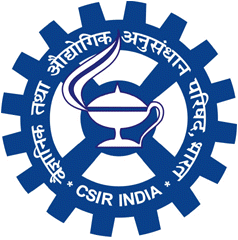Treatments Focus
Headaches / Migraine

A traffic jam, hot weather, no water, and a jumble of plans can make anyone’s head hurt. Headache is the type of pain or discomfort that people experience very often. Untreated, it contributes to absenteeism from work and school and can even lead to other medical issues like depression. According to the Global Disease Burden survey, nearly 488 million people in India suffered from headaches in 2019, with 16% experiencing migraines.
When you have a headache, you may feel like it is in your head, but in reality, it’s not. In fact, the muscles and blood vessels surrounding your head, eyes, ears, sinuses, neck, and shoulders have pain-sensing nerves. So, when set off in response to stress, muscle tension, enlarged blood vessels, and other triggers, these nerves send pain signals to your brain, causing most headaches.
There are three major categories of headaches, based on the source, severity, location, and duration: primary headaches, secondary headaches, and cranial neuralgias/facial pain/other headaches.
Migraine and tension-type headaches are the most common primary headaches, which aren’t symptoms of any underlying medical issue. While secondary headaches are usually associated with systemic illness or disease.
Symptoms of a Headache
On one or both sides of the head
In the back part of the head or neck
Behind one of the eyes
Around the nose, cheek, and forehead area
Your pain can appear gradually or suddenly. Or, it can be temporary or persistent, with or without episodes of increasing severity.
Most headaches do not necessitate medical attention. But seek advice from your doctor if you experience these additional symptoms, as they may be a sign of an ongoing issue in your body.
Facial swelling
Stuffy nose
Watery eyes
Stroke
Sleep problems
Double or blurry visions
Loss of balance
Nausea and vomiting
Noise and light sensitivity
Fever
Speech difficulties
Change in behavior
Numbness in the arms and legs
Concentration and memory issues
Stiffening of muscles in specific areas of the head and neck
Causes of Headache
The common causes of headaches include the following triggers.
- Emotional stress
- Smoking
- Caffeine withdrawal
- Alcohol use
- Change in sleeping habit
- Hormonal shift (during pregnancy and menstruation)
- Dehydration
- Skipped meal
- Poor posture
- Food allergies
- Strong aromas
- Effects of certain medication
- Change in weather
- Eye problem
Diagnosis and Treatment
For most headaches, though, a good old-fashioned history and physical examination are sufficient. You may, however, still be asked to undergo a CT scan or MRI, an EEG (brain wave test), and various blood tests if you present with any of the warning signs noted above. This would help in treatment.
Different types of headaches are treated differently, and no single treatment works for all patients. Therefore, learning about your headache triggers is the most important aspect of relieving your pain and reducing the number of headaches you can have.
Accordingly, your treatment plan would include:
- Lifestyle changes
- Stress management through relaxation and mindful techniques
- Over the counter (OTC) pain relievers (ibuprofen or acetaminophen)
- Physical therapy
- Biofeedback (to control heart rate, body temperature, muscle tension, and blood pressure)
- Preventive therapy (like calcium channel blockers, anti-depressants, etc.)
FAQ's :
References:
- Headache. (n.d.). Retrieved May 14, 2022, from https://www.hopkinsmedicine.org/health/conditions-and-diseases/headache
- Singh, G., Sharma, M., Kumar, G. A., Rao, N. G., Prasad, K., Mathur, P., Pandian, J. D., Steinmetz, J. D., Biswas, A., Pal, P. K., Prakash, S., Sylaja, P. N., Nichols, E., Dua, T., Kaur, H., Alladi, S., Agarwal, V., Aggarwal, S., Ambekar, A., … Dandona, L. (2021). The burden of neurological disorders across the states of India: The Global Burden of Disease Study 1990–2019. The Lancet Global Health, 9(8), e1129–e1144. https://doi.org/10.1016/S2214-109X(21)00164-9
- Headache Pain. (2017, May 18). NIH News in Health. https://newsinhealth.nih.gov/2014/03/headache-pain
- Headaches: Types, Symptoms, Causes, Diagnosis & Treatment. Cleveland Clinic. Retrieved May 14, 2022, from https://my.clevelandclinic.org/health/diseases/9639-headaches
- Headache Causes. Mayo Clinic. Retrieved May 14, 2022, from https://www.mayoclinic.org/symptoms/headache/basics/definition/sym-20050800
- Are migraines hereditary? Evidence and treatments. (2021, July 23). https://www.medicalnewstoday.com/articles/are-migraines-hereditary
- Yan, B. M., Depoy, E. G., Ahmad, A., & Nahas, S. J. (2021). Biomarkers in Migraine. Neurology India, 69(7), 17. https://doi.org/10.4103/0028-3886.315988
- Genetics of Migraine—Is There any Progress? (2017). Journal of Neurology & Stroke, Volume 7(Issue 4). https://doi.org/10.15406/jnsk.2017.07.00245
- Eisenstein, M. (2020). Closing the gender gap in migraine research. Nature, 586(7829), S16–S17. https://doi.org/10.1038/d41586-020-02867-4
- Genetics and migraine. The Migraine Trust. Retrieved May 14, 2022, from https://migrainetrust.org/understand-migraine/genetics-and-migraine/
Related Articles
Book an Appointment to understand how GenepoweRx can help you in treating
Headaches / Migraine
Meet The Doctors
Dr Kalyan Uppaluri
Dr Hima Challa
Your genetics … Your Test ... Your Health Success
It’s always the word of mouth that’s the best advice. Here are some of our…


Our Partners






Professional Partnerships
Government Association

